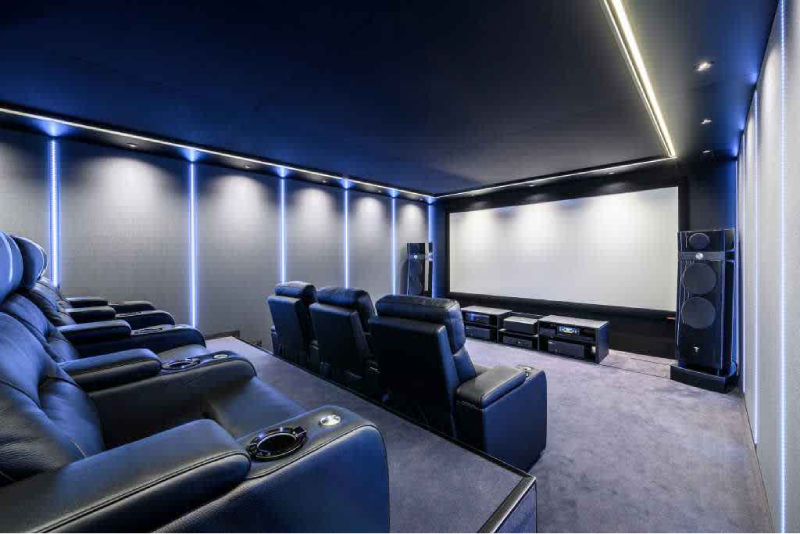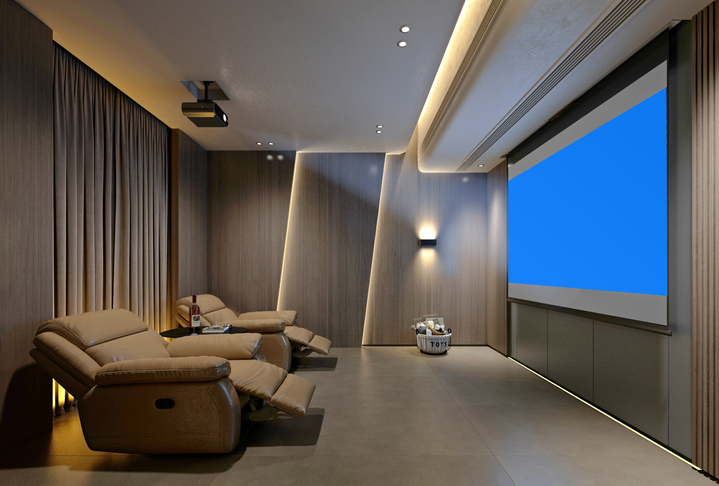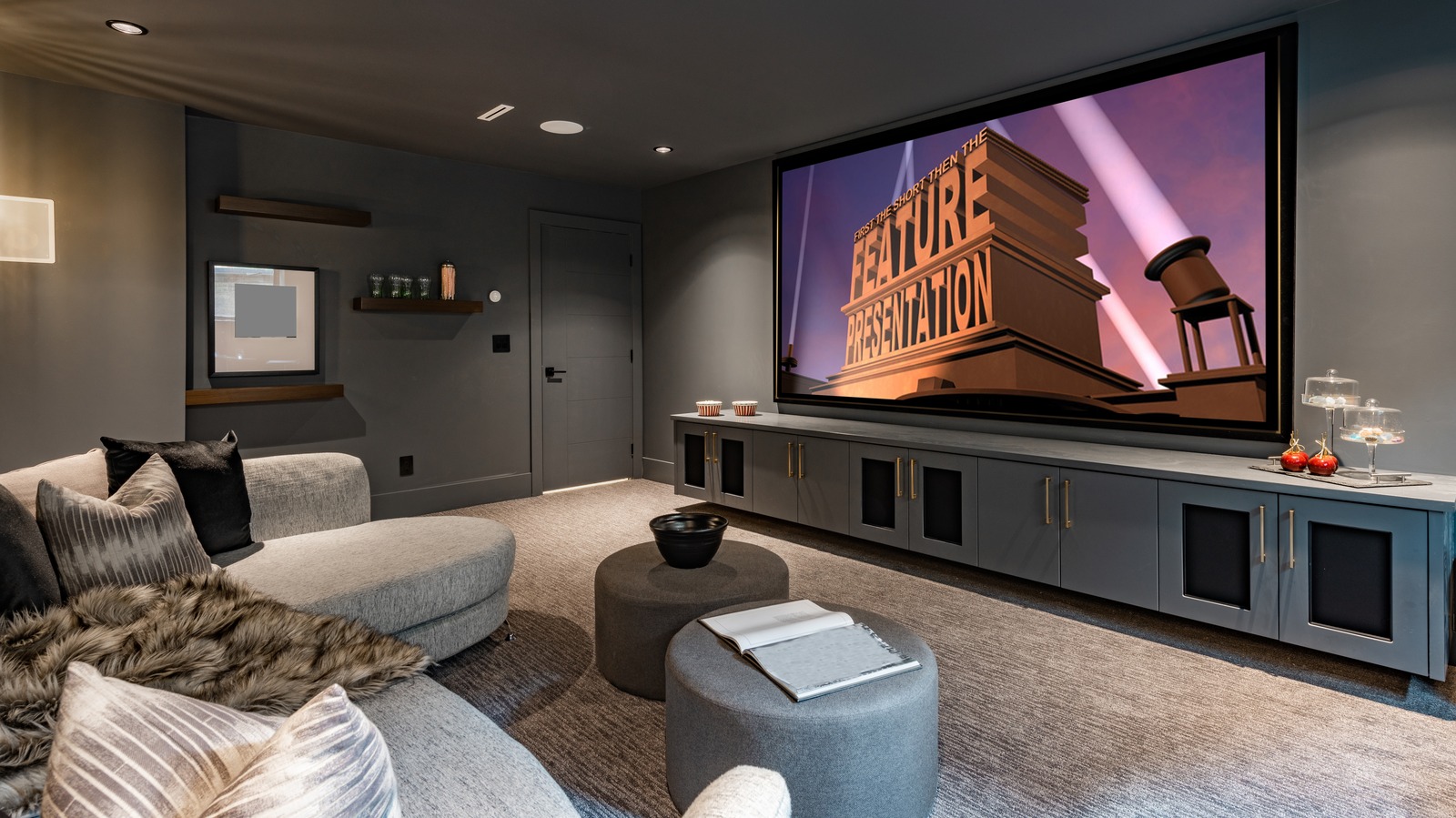Home Theater 101: Everything You Need to Know for a Cinematic Experience in the house
Developing a home movie theater that equals the motion picture experience of an industrial theater includes cautious consideration of multiple components, consisting of display option, sound systems, and space layout. Whether you are contemplating the perfect screen size or the intricacies of surround noise, comprehending these fundamentals is important.
Choosing the Right Screen
When establishing up a home cinema, choosing the best screen can make or damage the seeing experience - tampa home theater. The screen acts as the centerpiece of your configuration, influencing image top quality, seeing angles, and general aesthetic. Trick aspects to think about include display type, resolution, and dimension
Initially, identify the ideal screen dimension based on your area dimensions and seating distance. Next off, pick in between numerous screen kinds, such as fixed-frame, motorized, or retracting screens, each offering distinct advantages.
Resolution is another essential element. For an absolutely immersive experience, consider a screen developed for 4K and even 8K material, making certain sharpness and quality. Additionally, take into consideration the screen's gain, which impacts illumination and comparison; a higher gain can enhance brightness in well-lit spaces, while a reduced gain might be more suitable for darker atmospheres.
Picking Sound Equipment
Audio tools is a crucial element of any type of home cinema system, dramatically enhancing the overall viewing experience. The selection of audio equipment can establish the depth, clarity, and immersion of sound, important for producing a cinematic environment.
When selecting audio tools, take into consideration a border stereo, which normally includes a receiver, multiple speakers, and a speaker. A 5.1 or 7.1 channel system is advised, where the very first number represents the audio speakers and the 2nd the speaker, giving an immersive soundscape. The receiver is the heart of the system, handling sound and video signals, and ought to support modern formats like Dolby Atmos for a boosted spatial experience.
Quality audio speakers are crucial; search for versions that use a balanced sound account with excellent bass action. Floor-standing speakers can produce richer audio, while shelf alternatives conserve area. Additionally, consider cordless choices for ease of installment, although wired systems usually provide exceptional performance.

Optimal Seating Arrangements
Creating an ideal home theater experience pivots significantly on optimum seating setups. The setup of seats plays an essential duty in both convenience and checking out high quality, directly impacting the total motion picture experience.
First, think about the screen dimension and watching range. An usual guideline is to position seats at a distance roughly 1.5 to 2.5 times the angled size of the screen. This ensures an immersive experience without straining the eyes.
Following, elevation is essential. The back rows should be greater than the front to prevent obstructions if your seats is in a tiered format. For level seating, ensure that the front row is not also near to the screen, which everyone has a clear line of view.
Additionally, consider the setup in terms of social characteristics. Group seats can enhance the public experience, while private seats might be chosen for individual viewing.

Finally, prioritize comfort with ergonomic seats that supports prolonged watching periods. Integrating recliners or supported seats can significantly improve the experience, making the home cinema a favored location for both entertainment and leisure.
Lighting and Ambiance
Efficient lights and ambiance are necessary parts of a well-designed home movie theater, as they dramatically influence the watching experience. The appropriate lighting can improve the motion picture feeling, while poor selections can diminish it. For optimum outcomes, consider a layered illumination technique that consists of ambient, job, and accent lighting.
Ambient lighting supplies basic lighting, making certain that the space is not completely dark, which can strain the eyes. Dimmer switches are highly suggested, permitting modifications based on the content being seen. Task illumination, such as wall surface sconces or flooring lamps, uses practical lighting for tasks like analysis or navigating the area without interrupting the general environment.
Accent illumination can be utilized to highlight architectural features or develop centerpieces, adding depth and passion to the space. LED strip lights behind screens or along racks can give a refined glow that boosts the aesthetic experience without overwhelming the viewer.
:strip_icc()/heritage-lake-model-2524d1f5bc974300a65f3187a6ebd929.png)
Wiring and Installation Tips
A well-planned circuitry arrangement is critical for attaining ideal performance in your home cinema system. Appropriate electrical wiring not only ensures high-quality sound and video signals but also boosts the general aesthetic of your room. Begin by drawing up your layout, recognizing where each element will be positioned, including your display, speakers, and receiver.
When picking cords, prioritize high-grade, properly gauged circuitry to minimize signal loss. HDMI cables should be made use of for video connections, while audio speaker wire must match the specs of your audio speakers and amplifier. Go with in-wall ranked cable televisions to adhere to security criteria and preserve a tidy look.

Final Thought
In summary, producing a remarkable home cinema experience requires mindful consideration of different components, including display selection, audio devices, seating setups, lighting, and electrical wiring. Each part plays an important duty in achieving ideal efficiency and ambiance, eventually boosting the enjoyment of home enjoyment. By focusing on these factors, a cinematic environment can be efficiently replicated, permitting immersive checking out experiences that rival conventional cinema setups. Interest to information in each location is important for general contentment. click to read
Developing a home cinema that measures up to the motion picture experience of a business theater includes more tips here cautious consideration of multiple components, including display choice, audio systems, and space layout.When setting up a home cinema, picking the ideal screen can make or break the checking out experience. Next off, pick between various screen kinds, such as fixed-frame, motorized, or retractable displays, each offering distinctive benefits. For a really immersive experience, consider a display created for 4K or even 8K content, ensuring intensity and clearness.In summary, developing a phenomenal home movie theater experience needs careful factor to consider of different elements, consisting of screen option, audio devices, seating arrangements, lights, and electrical wiring.